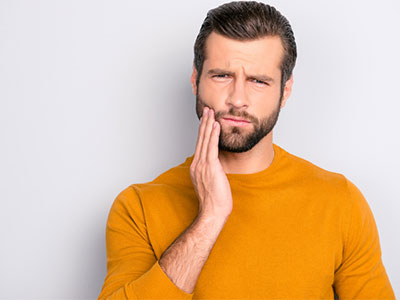Temporomandibular Joint (TMJ) disorders can cause jaw pain, headaches, clicking sounds, and difficulty chewing, making everyday activities uncomfortable. Many people wonder whether braces, Invisalign, or other orthodontic treatments can help relieve TMJ issues—or if they might make them worse.
At Robert Stoner Orthodontics, we want to separate myths from facts about the relationship between TMJ disorders (TMD) and orthodontics. If you or your child experiences jaw pain, here’s what you need to know about whether orthodontic treatment can help.
Understanding TMJ Disorders
The temporomandibular joint (TMJ) connects your lower jaw to the skull and allows for movement when chewing, speaking, or yawning. When something disrupts this joint’s function, it can lead to TMJ disorder (TMD), causing symptoms such as:
- Jaw pain or soreness
- Clicking, popping, or grinding sounds in the jaw
- Headaches or ear pain
- Difficulty opening or closing the mouth
- Jaw locking or stiffness
There’s no single cause of TMD, but common triggers include jaw misalignment, teeth grinding (bruxism), stress, or arthritis.
Myths vs. Facts: Orthodontics and TMJ Disorders
Myth #1: Braces Always Fix TMJ Disorders
Fact: Braces can help in some cases, but they are not a guaranteed cure.
If a bad bite (malocclusion) or misaligned teeth are contributing to TMJ pain, orthodontic treatment may help alleviate symptoms. However, if TMJ issues stem from muscle tension, stress, or joint damage, braces alone won’t be enough to fix the problem.
Braces or Invisalign can help if:
- A misaligned bite is causing strain on the TMJ.
- Crowded or crooked teeth are forcing the jaw into an unnatural position.
- Jaw alignment needs correction to improve function.
Braces won’t help if:
- TMJ pain is due to arthritis, injury, or excessive clenching and grinding.
- Stress-related muscle tension is the main cause of discomfort.
Myth #2: Braces Can Make TMJ Pain Worse
Fact: Some patients experience temporary discomfort, but orthodontics do not cause TMJ disorders.
During orthodontic treatment, it’s normal to feel some jaw soreness, especially after adjustments. This discomfort is different from a true TMJ disorder and usually resolves within a few days.
If a patient already has TMJ issues, orthodontic treatment may temporarily aggravate symptoms, but once the bite is corrected, many patients find that their jaw pain improves over time.
Tip: If you experience persistent jaw pain during orthodontic treatment, let your orthodontist know—we can adjust your treatment plan to ensure comfort.
Myth #3: Invisalign Can’t Help with TMJ Disorders
Fact: Invisalign can sometimes improve TMJ symptoms by realigning the bite.
Invisalign is often a great alternative to traditional braces for patients with TMJ discomfort. Because clear aligners gently shift teeth without brackets or wires, they can help:
- Reduce pressure on the TMJ by aligning the bite more naturally.
- Prevent teeth grinding (since aligners act as a protective barrier).
- Allow more jaw mobility than traditional braces in some cases.
However, if TMD is caused by joint inflammation or muscle tension, aligners alone may not fully resolve symptoms.
Myth #4: TMJ Disorders Always Require Surgery
Fact: Most TMJ cases can be managed with non-surgical treatments, including orthodontics.
Surgery is rarely needed for TMJ disorders. In most cases, symptoms can be improved with conservative treatments, such as:
- Orthodontic treatment (if misalignment is contributing to the issue).
- Custom nightguards or splints to reduce teeth grinding.
- Physical therapy or jaw exercises to strengthen jaw muscles.
- Stress management techniques to reduce clenching.
At Robert Stoner Orthodontics, we take a conservative approach—focusing on bite correction and non-invasive treatments first before considering advanced options.
When to Consider Orthodontics for TMJ Relief
If you’re experiencing TMJ discomfort, an orthodontic evaluation can help determine whether braces or Invisalign could be part of the solution.
You might benefit from orthodontic treatment if you have:
- A deep bite, crossbite, or open bite putting pressure on your TMJ.
- Crowded or misaligned teeth causing an uneven bite.
- Jaw pain that worsens when chewing or speaking.
Orthodontics may not be the best solution if you have:
- TMJ pain mainly caused by arthritis or joint deterioration.
- A history of jaw trauma or injury.
- No bite issues or misalignment contributing to symptoms.
If orthodontics isn’t the right option, we can refer you to a TMJ specialist or physical therapist for additional care.
Final Thoughts: Can Orthodontics Fix TMJ?
Orthodontic treatment can improve TMJ symptoms in some cases, but it’s not a universal cure. The best approach depends on the cause of your TMJ disorder—if misalignment is a factor, braces or Invisalign may help, but if the issue is muscle-related, other treatments may be needed.
At Robert Stoner Orthodontics, we take a personalized approach to care, ensuring that every patient receives the right treatment for both their smile and jaw health. If you’re experiencing jaw pain or TMJ symptoms, we’re here to help you explore your options.
